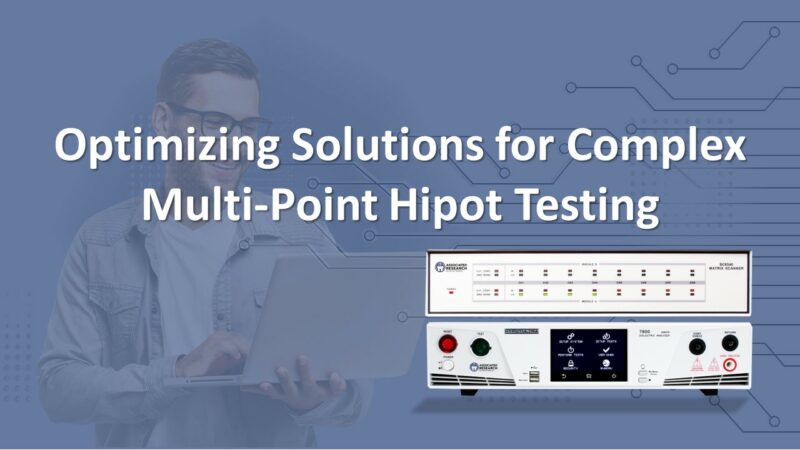In our previous issue, we delved into the foundational aspects of Hipot testing, equipping you with the essential knowledge to simply connect your Device Under Test (DUT) to an electrical safety tester. However, the world is not always simple, and certain DUTs, such as EV batteries, energy storage, power adapters, and PCB, require more extensive safety testing, involving not just testing between two points but multiple testing points. We understand that multi-point testing can increase complexity and present challenges, even for experienced professionals. Leveraging our extensive expertise, we're here to guide you through the complexity of multi-point Hipot testing and provide you with a comprehensive solution to ensure accurate testing.
Challenges in Multi-Point Hipot Testing
During multi-point hipot testing, personnel errors often lead to the unintentional applying high voltage to the same test point, neglecting certain test points, or even incorrect connecting test leads to the wrong test points. These errors not only affect the precision and reliability of testing results but also require re-conducting the tests. Moreover, when operators switch test leads to different points, it leads the aforementioned issues and prolongs the overall testing time. Ultimately, these factors collectively result in a notable decrease in testing efficiency and raise concerns about potential safety issues.
Taking a power adapter as an example, the process of applying high voltage becomes more complex. Unlike the standard Hipot test connection between two points: shorted fire and line prongs, and the chassis, testing must occur between the primary side and ground, the secondary side and ground, and the primary side and the secondary side. Therefore, within this complexity, the aforementioned errors could occur. Preventing these errors is a big challenge for testing personnel.
Optimizing Multi-Point Hipot Testing Solution
Given these challenges, simplifying the Hipot testing approach to be initiated with just a click is a way to solve them. It eliminates the need for operators to repeatedly connect testing leads, thereby significantly reducing the risk of errors. The Associated Research SC6540 holds the key to addressing these challenges. The Multiplexers integrate with the HypotULTRA® and OMNIA® II, effectively creating a versatile multi-testing hub. Each channel of the SC6540 Scanner's functions can be finely tailored to fulfill distinct testing roles. Continuing with the power adapter example:
- Channel 1 connects to the primary side
- Channel 2 connects to the ground
- Channel 3 connects to the secondary side
Each channel can be designated as High (H) for high-voltage testing output, Low (L) for the return connection, or set as Open (O) signifying a non-operational status. This configuration process is facilitated through the intuitive menu of the electrical safety tester or, alternatively, through the user-friendly WithStand® automation software.
For setting up the step test:
- Step 1: Channel 1 as H, channel 2 as L, and the remaining channels as O
- Step 2: Channel 3 as H, channel 2 as L, and the remaining channels as O
- Step 3: Channel 1 as H, channel 3 as L, and the remaining channels as O
Furthermore, you can expand your testing capabilities while optimizing efficiency by connecting up to 80 channels. This enables you to perform testing on multiple DUTs with a single click or tailor the setup to match your specific testing needs. If space is limited in the workstation, the eec SE-7441 Electrical Safety Analyzer, which comes with built-in scanners (8 high voltage and 8 high current), could be a suitable option.
This optimized solution for multi-point hipot testing enhances testing efficiency and precision by improving testing configurations and methodologies, addressing common challenges in multi-point hipot testing. If you would like to learn more about it, please contact our sales representative.





